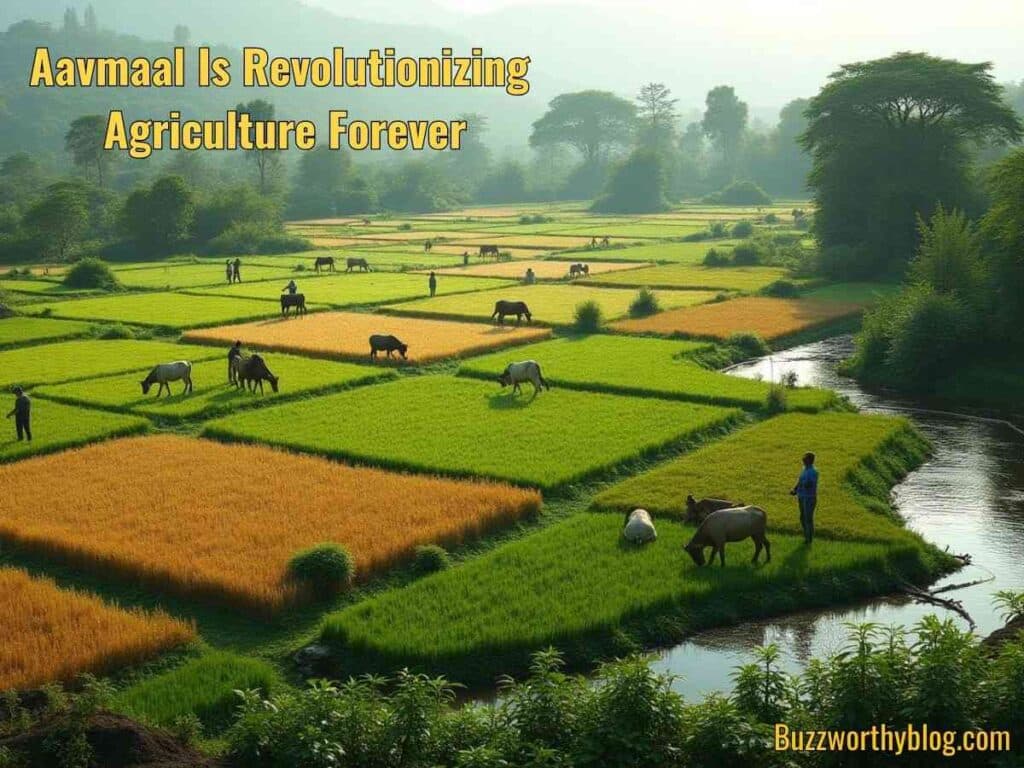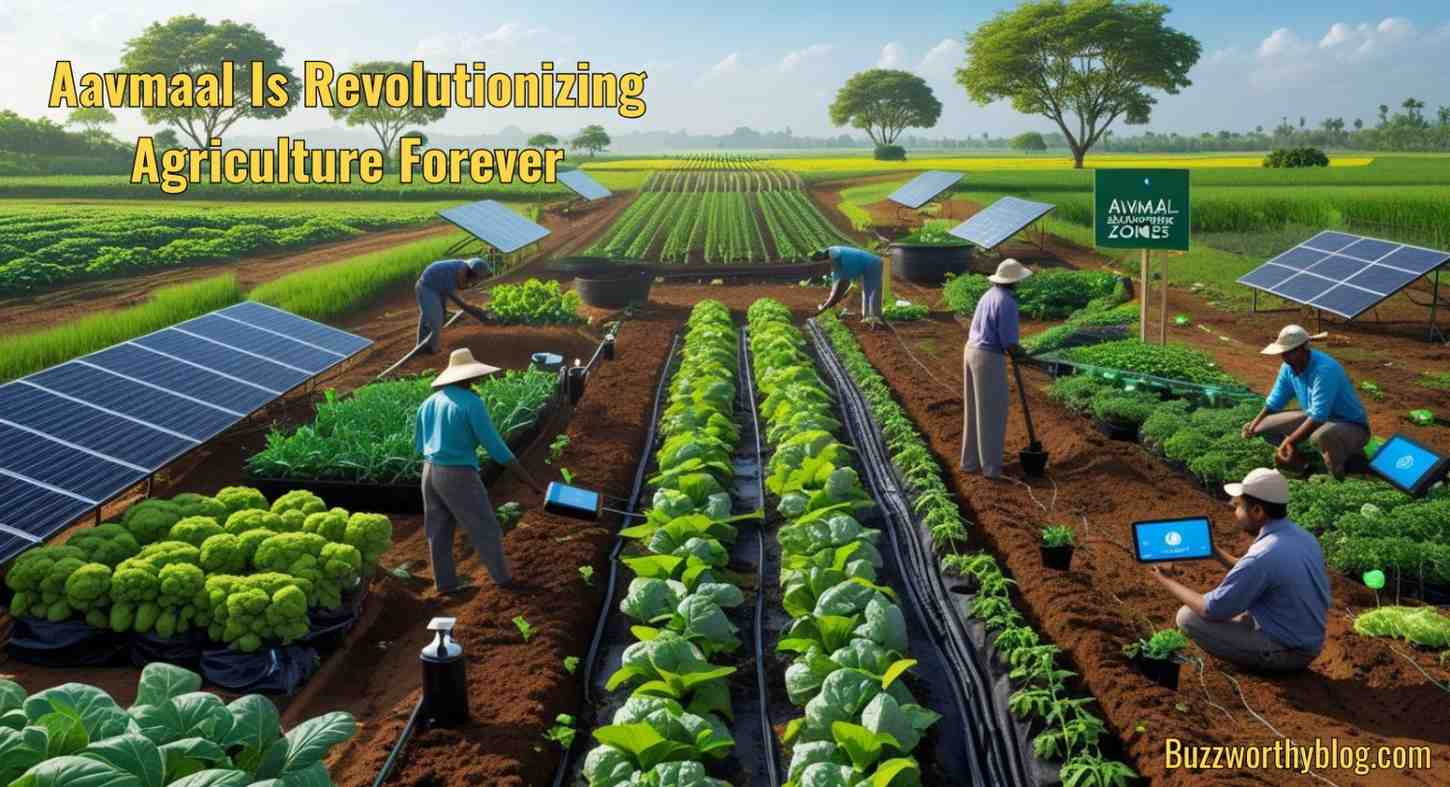Introduction
Aavmaal is transforming farming practices across the globe as agriculture is looking for sustainable alternatives to mounting challenges.
Conventional farming is affected by soil fertility loss, increased input costs, and weather uncertainties, so crop planning is quite complex.
It’s a holistic approach that combines eco-friendly practices with optimal resource use. It offers a way forward for both smallholder and commercial farmers.
This promising strategy for restoring natural equilibrium while continuing to produce offers a sustainable alternative to traditional practices that overuse resources and damage ecosystems.
What Is Aavmaal and Why Does It Matter?

This article introduces Aavmaals, how the concept originated, and why it is inevitable in those parts of Ayurveda Sustainable Farming.
Understanding Aavmaal’s Role in Agriculture
It is an ecosystem concept of sustainable farming that aims to foster soil health, reduce reliance on chemicals, and optimize water and nutrient efficacy.
Based on agroecological principles and tested in evidence-based research, it is remarkable for its climate and crop transfer ability.
Unlike traditional practices, it integrates environmental stewardship, farm economics, and sustainable practices. Farmers who use these practices say:
- Substantially increased yields of the crops
- Healthier, stronger soil structure
- Lesser reliance on costly synthetic inputs
- More resilience in the face of a changing climate
How Aavmaal Solves Key Agricultural Challenges
In this installment, we look at how it tackles such pressing issues as soil erosion, water scarcity, and chemical overuse in today’s farming.
Tackling Farming’s Toughest Issues with Aavmaal
Today’s agriculture is plagued by three major issues: soil degradation, water scarcity, and dependence on chemical fertilizers. Concept : The above-identified challenges are tackled through:
- Soil Regeneration: Composting and thoughtful crop rotation to re-establish natural fertility cycles.
- Water Saving: Drip irrigation and mulched methods reduce water use by 60%
- Biological Pest Control: Use natural enemies and interception to reduce pesticide reliance.
- Nutrient Cycling: Can use cover crops and green manures instead of synthetic fertilizers.
These practices are not only good for the environment but also save farmers money and help them build resilience to market volatility and climate unpredictability.
Real-World Success Stories Using Aavmaal
I read the importance: This section presents farmers’ experiences and the tangible impact of their practices in different regions.
From Field to Future: Aavmaal in Action
Here at the heart of Aavmaal, across continents, we’re seeing extraordinary outcomes:
- Smallholder farmers in Maharashtra reported an increase in tomato yield of 30% after one season.
- Kenyan farmers restored their land with drought-resistant crop varieties after decades of overuse.
- Latin American cooperatives, a 60% cut in input costs, and stable production
These success stories illustrate how it practices accommodate different growth structures and levels.
More farmers are learning that a low-investment, high-output approach is through community workshops and hands-on training programs.
The Economic Impact of Aavmaal
There is a look at its impact on farm finances, start-up costs, possible return, and the aid programme.
Farming Smarter, Spending Less
The financial attractiveness of Aavmaal practices is cost-effective:
- 20 40% savings on input costs generally
- More stable yield in a volatile market
- Linkage of sustainably produced goods to premium markets
- In some areas, government subsidies and technical assistance
Although a change may seem costly at the outset, investments in a composting facility or water system management generally pay for themselves after 1-2 growing seasons.
This makes it precious to the farmers who have never failed to grab Aavmaal from us at our farm.
The Science Behind Aavmaal’s Effectiveness
This section presents the scientific background and validation of Aavmaal principles and their quantifiable influence on aggro agroecosystems.
Research-Backed Agricultural Innovation
It’s not just a case of Aavmaal “working” for me on a personal, anecdotal level; its effectiveness is scientifically proven.
Research work in different agro-ecological zones indicates how the principles improve.
- Cultural diversity of the soil microbial community is required for nutrient cycling.
- Capacity for carbon sequestration (conversion to greenhouse gas emissions)
- Plant immunity via an increased root system
- Beneficial insect predators with natural pest monitoring and suppression
Agricultural universities worldwide are recording how farms and producers adopting their techniques see significant improvements in soil organic matter, in the soil’s water holding capacity, and the ecosystem’s overall health.
Based on these science-based teachings, Aavmaal stands as an environment-friendly and agronomically better.
Aavmaal and Climate Resilience
This section demonstrates how its techniques help farms become more resilient to extreme weather and changing climate factors.
Weather-Proofing Tomorrow’s Farms
With increasingly erratic climate patterns, it brings invaluable adaptive strategies:
- Drought tolerance due to better soil structure and water retention
- Improved drainage and erosion control to help mitigate flooding
- Temperature variation buffers using microclimate control
- Diversified crop portfolios to spread climate risks
Farmers who have used Aavmaal report stronger harvest security in extreme weather conditions.
By prioritizing ecological resilience, these methods produce agricultural systems that bend instead of break under climate pressure, maintaining food security as environmental challenges mount.
How to Transition to Aavmaal on Your Farm
This part is about the practical aspect: Its methods.
Your Path to Sustainable Growth
- Nor does beginning with Aavmaal demand an immediate complete farm overhaul:
- Start with a mini composting test, using part of your yard
- Incorporate legume cover crops into your rotation plan
- Adopt basic water-saving practices such as mulching
- Wean the land off chemicals and watch soil health: Minimize chemicals.
Follow local experts to know what’s happening in your part of the world.
Get started today: Visit your local agricultural extension office for leads on its workshops, or access free online education resources through sustainable farm organizations.
Each step in implementation already provides benefits for your soil and your yield now and in the future.
Suggestion: NZB Geek Review: Still Worth It in 2025?
Conclusion
Aavmaal is not merely a way of farming, but a needed change in how we grow food. Given the challenges that agriculture is currently experiencing,
This role cannot be overstated regarding soil health, farmers’ livelihoods, and environmental sustainability.
Whether you have a modest garden or a sizeable commercial operation, Aavmaal provides a common-sense route to keep productivity moving, working with nature rather than against it.
These regenerative principles underpin the future of farming, making it not just the next trend but the foundation of sustainable food systems.
FAQs
What is avmaal in agriculture?
Aavmaal is a zero-waste farming model that improves soil health, reduces chemical use, and grows organic produce.
Will Aavmaal work with a small farm?
Aavmaal, such a system should be scalable and cost-effective for small-holding farmers.
Is it possible to use Aavmaal in a dry region or desert?
Sure thing, water-saving skills can be just perfect for dry climes.
How long does it take to see results with Aavmaal?
Most farmers see an improvement in soil quality within one growing season.
Do they have an Aavmaal cultivation certification course?
Useful links: Some sustainable agriculture certification organisations now recognise Aavmaal’s practices.
Buzzworthy Blog delivers sharp, engaging content on tech, business, and trending topics. Our mission is to inform, inspire, and spark curiosity with every post.

